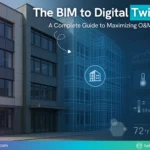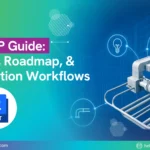Journey of BIM in the Indian AECO Industry
August 5, 2022

We would like to share the BIM Story in India; through our journey of almost 2 decades. Through a series of articles, we will share India’s BIM story with parallels to Excelize BIM journey.
PART 1
The journey of Building Information Modelling (BIM) in India has moved from doubt to acknowledgment to utilizing the higher possibilities of BIM. Excelize Software (www.excelize.com), serving the global Architecture, Engineering, Construction and Operations (AECO) industry from its headquarters in Aurangabad, has been a pioneer in this transformational journey for almost two decades.
Construction & Architecture have gone through a transition since their shift in design communication from 2D (Computer Aided Design) CAD drawings to 3D models. BIM models came in handy for the architects and builders as it helped in visualizing their projects accurately. BIM models also helped to outdo the constraints of 2D drawings as it integrated all the project-relevant information in just one model during the construction of the project. The ability of BIM is to align and incorporate data precisely to enhance good communication among project stakeholders (clients, architects, engineers, and contractors). It is also a starting point for use of advanced technology applications like artificial intelligence, robotics, etc in the AEC industry. Excelize is optimistic that technology is going to be a key enabler for the AECO industry in the times to come.
BIM is not just automation it leads to creative, logical, analytical, and critical thinking and enables a process that accelerates operations. The adoption of BIM has also been influenced by the implementation of policies and construction standards. It is safe to say that BIM is a center of information management for all projects, irrespective of location, standards, scale, after-construction use, nature of construction, and others.
Potential benefits of BIM
At the beginning of this millennium, there was significant growth in the number and types of projects being constructed. There was an increase in projects with advanced security systems and sustainable energy requirements. This brought up the necessity of having a tool that would have all interactive data
right from design to the construction in one place and would also be available during the lifetime of the project for facilities management & maintenance. Thus, most of the project stakeholders started gaining interest in BIM.
By 2015 most of BIM users began to see BIM as a ‘Must Have’ tool. Using BIM, it was possible to track and monitor potential issues such as cost overruns and cost to completion based on the progress of present construction. During the operations and maintenance stage, locating and accessing assets, and identifying challenges in accessing the assets are some benefits that are also gaining interest.
We have seen stakeholders visualizing the design flaws when they could see the model much ahead of construction. Clash detection and coordination using BIM models help save time during the coordination stage by almost 1/3 of the time required using the conventional method. Coordination issues are rectified in the model which in turn helps reduce in wastage of material and time. Construction sequencing helps in checking on time progress during construction of the project and helps in making catch-up plan if there is any delay. Another important benefit is having an asset model which is generated with up-to-date information about the project constructed at the site. This model helps during the entire lifespan of the project for facilities management.

















